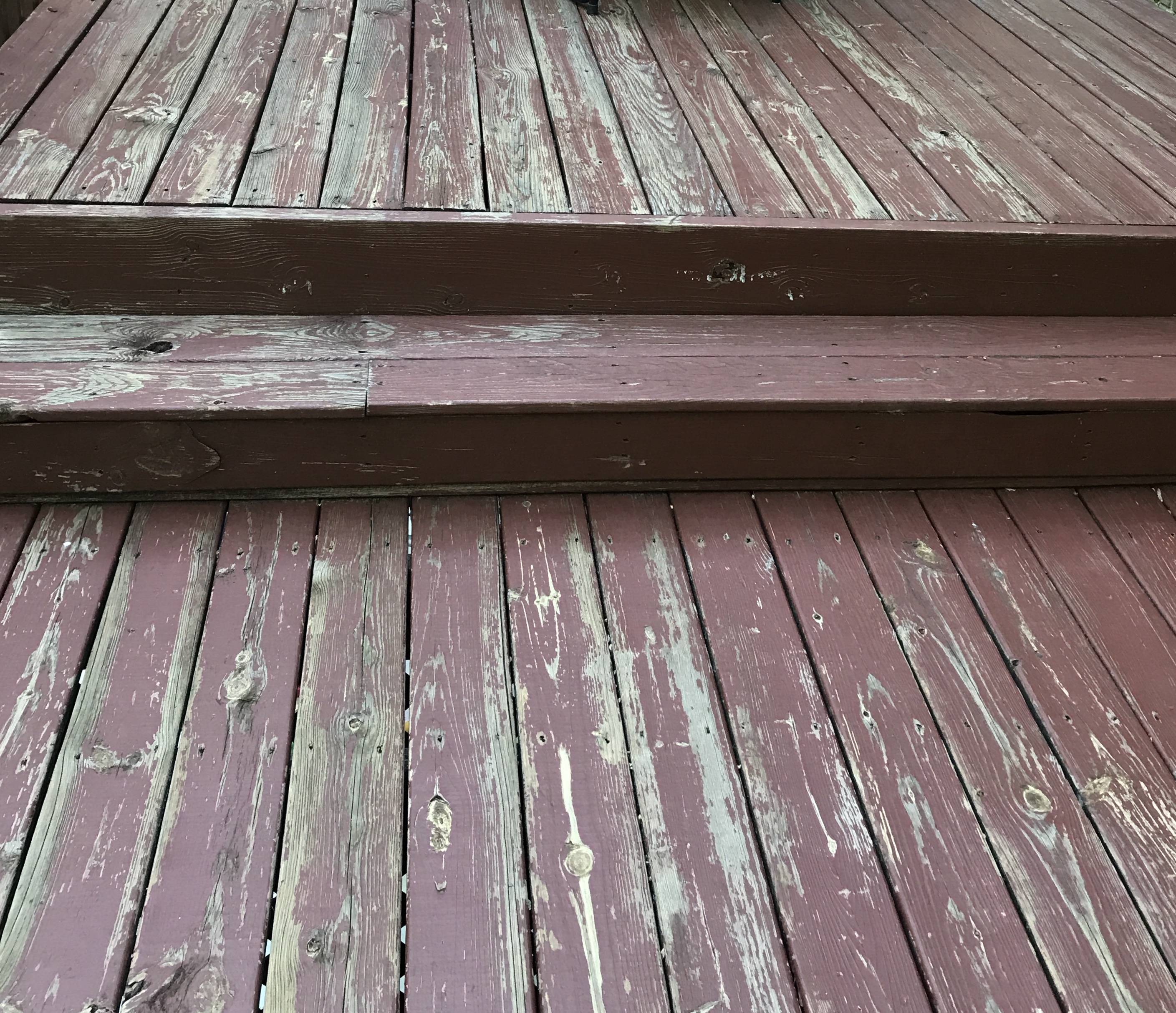Failing Acrylic Stain
Q. I've been told that I'm better off applying a painted stain for longevity vs. transparent stain. Is this accurate?
I think what you mean by “painted stain” is a solid stain with no ability to see through it (opaque). Solid stains are water-based stains, and so too are most semi-solid stains. Water-based is also referred to as acrylic. At Deck Medic, our oil-based stains are semi-transparent, which means you can see the wood grain and knots (the character) through the stain.
Some acrylic stains do have particularly good longevity for their initial application. But decks will always outlast the longevity of the initial application. So, knowing that you will at some time have to deal with a failing stain (usually after 2-4 years), what is your next step? In other words, what you must consider is what happens when an acrylic stain fails as compared to an oil-based stain.
An acrylic stain, because it sits on top of the wood (film-forming), it cracks, peels and chips when it begins to fail. It will suddenly fail, thereby providing direct access of the environmental elements to the wood (UV and water intrusion damage). At that point, you are faced with the proposition of staining over failing stain (not effective), or taking the time, labor and excessive cost to sand and scrape off the old stain.
On the other hand, when an oil-based stain fails, it is a gradual process. You will notice that the color will fade over time, and you will then know that you are starting to lose protection. Oil-stains, because they sink into the wood, do not peel, crack or chip during the failing process. So, at some point during this gradual failure, you can merely wash the deck again and re-apply the same type and color of oil-based stain.
Typically, the cost to re-stain using acrylic stains is about the same or more of the original cost, depending upon the amount of sanding required. For oil-stain maintenance recoats, the cost can be as low as half the original cost, depending upon a few factors.
In addition to the advantages of oil stains over acrylic stain as they pertain to failing stain, there is also the issue of breathability of the wood throughout its life. Acrylic stains are film forming, and by their very nature lock in the moisture of the wood and limit the wood’s breathability. As the wood “breathes,” the moisture level changes throughout the seasons. When the sun hits the surface of an acrylic stain, the moisture attempts to escape. This has the real risk of perforating the surface of the stain, leading to those issues of cracking, peeling and chipping. For oil-based stains, because they do not sit on top of the wood, but rather sink into the wood, this issue with lack of breathability is not a factor.
Q. Why are Deck Medic’s stains better than what I can get at Home Depot?
Deck Medic has been in business for 30 years. As one of the nation’s leading deck restoration companies, we often are offered samples of stain from many of the major (and minor) manufacturers.
After years of experimenting with many different brands of both water-based and oil-based stains, we found none of them up to our standards. We subsequently took the steps to develop our own line of semi-transparent oil-based stain. Our penetrating stain is a two-oil system consisting of both non-drying oils that penetrate deep into the wood fiber where the woods natural oils used to be, and a drying oil that stays at the surface locking in the conditioning oils. Our stains also contain pigments to provide protection from the damaging ultraviolet rays of the sun while still allowing the natural beauty of the wood grain to show through. You simply will not find a longer lasting and more protective stain at the big box stores.

